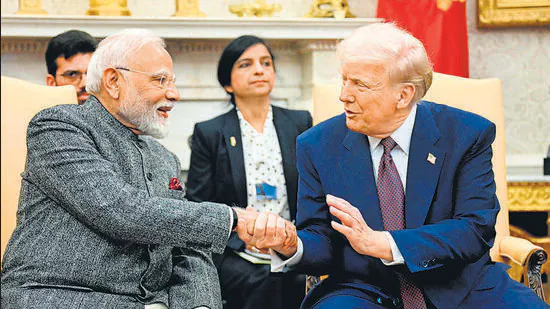Despite months of negotiations, India and the United States have yet to finalize a tariff agreement under President Donald Trump’s administration, raising concerns for both nations as they navigate intense economic competition with China.
Talks Between Modi and Trump Stall Despite High Hopes
When Prime Minister Narendra Modi visited Washington soon after Trump’s second inauguration, expectations were high for a quick deal. But six months later, no agreement has been reached.
This Friday, the U.S. is set to impose a 26% tariff on all Indian imports — a move that could severely impact bilateral trade worth nearly $130 billion annually.
Why the Stakes Are So High
-
India is the world’s most populous democracy and one of America’s most crucial economic and military partners.
-
For decades, the U.S. has been building a strategic alliance with India as a counterweight to China.
-
Indian Americans play influential roles in business, politics, and academia across the United States, further strengthening ties.
Trade between the two countries covers vital sectors like pharmaceuticals, auto parts, electrical goods, and gemstones — industries that could be directly affected by new tariffs.
India’s Negotiating Push and the Roadblocks
India’s Commerce Minister Piyush Goyal recently told Reuters that the two sides were making “fantastic progress”, suggesting that talks could continue into the fall. Modi has even invited Trump to India for a defense summit, where a larger deal might be finalized.
Yet, while other nations — including Britain, the European Union, Vietnam, Japan, and Indonesia — have already secured agreements with the U.S., India remains on the sidelines.
Key Issues on the Table
-
Possible 15–20% tariffs on Indian exports.
-
Zero tariffs for most U.S. goods entering India.
-
Tensions over pharmaceuticals and auto parts, already facing additional U.S. duties.
-
Concerns about India’s agriculture sector, which fears devastation from large-scale American imports.
The Trump Factor: An Unpredictable Negotiator
Both Trump and Modi are known for their nationalistic leadership styles and had enjoyed a strong rapport. However, relations soured after Trump publicly took credit for brokering a cease-fire between India and Pakistan, later hosting Pakistan’s military leader in Washington.
Observers say that Trump often seeks headline-grabbing deals and prefers direct talks with heads of state, making the outcome of these negotiations uncertain.
Risks for India and Global Trade
Experts warn that without a deal, Indian exporters could face higher tariffs than their Asian rivals, especially as multinational companies shift production away from China.
-
Apple and other tech giants are already investing billions in India.
-
A tariff disadvantage could make India less competitive than Vietnam or Indonesia.
-
U.S. businesses remain eager for greater access to India’s growing consumer market, which is expanding even as other economies stagnate.
What’s Next?
The next few months are critical. Some Indian exporters argue for a “zero tariff” arrangement, giving U.S. goods open access in exchange for the same privilege. But Indian farmers and local industries remain wary of losing protection against global competition.
Ultimately, the decision rests with Trump. As Mukesh Aghi, president of the U.S.-India Strategic Partnership Forum, put it:
“The president wants to talk to the head of state and then say, ‘We have a deal.’ It’s about the headlines.”







